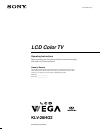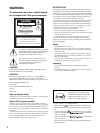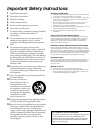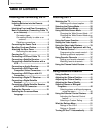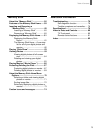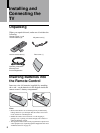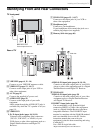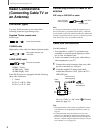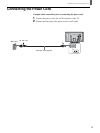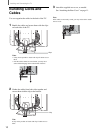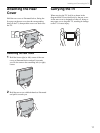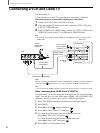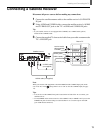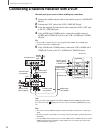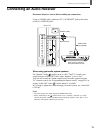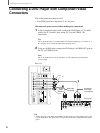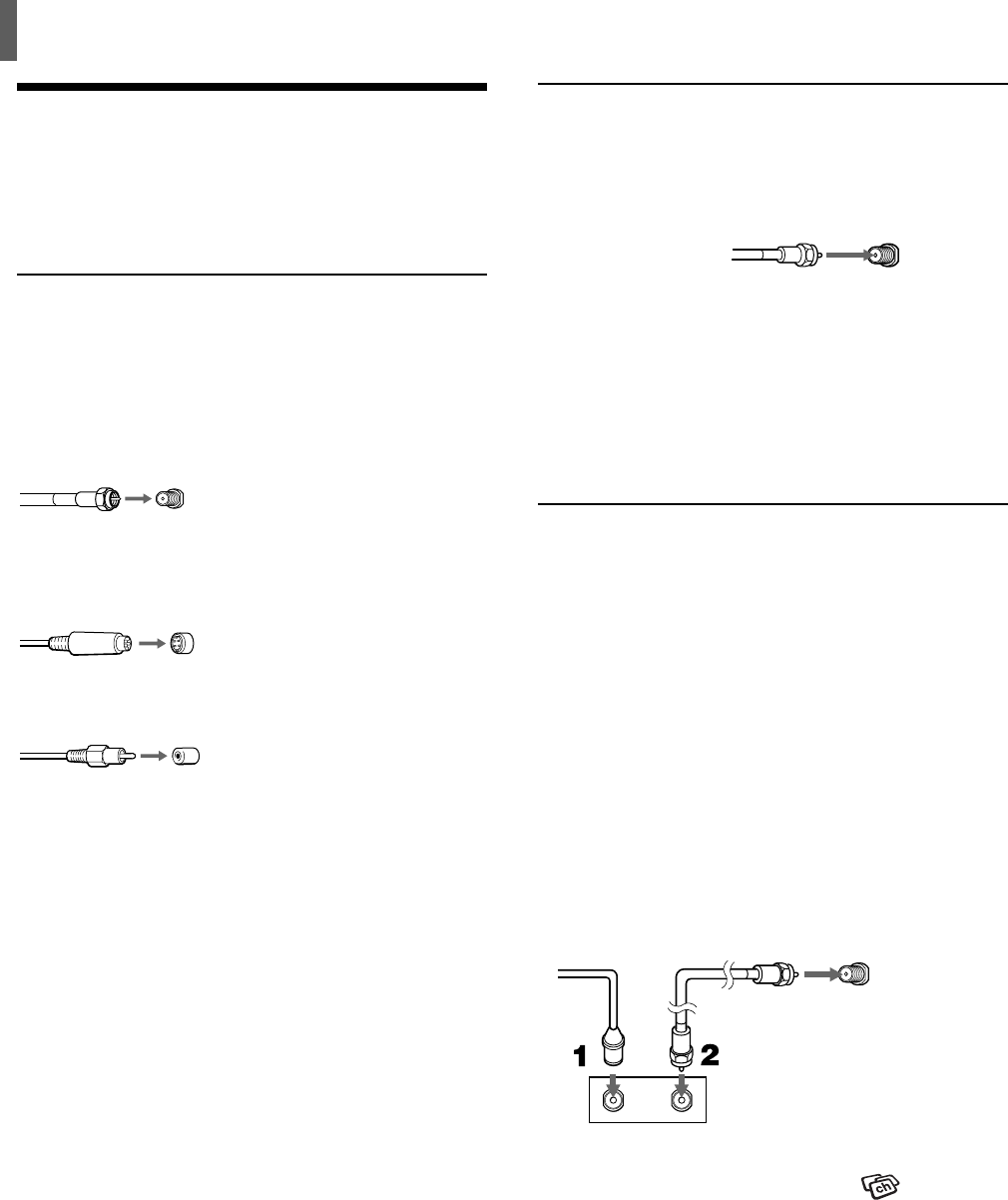
8
Installing and Connecting the TV
Connecting directly to cable or an
antenna
VHF only or VHF/UHF or cable
Note
It is strongly recommended to connect the antenna using a 75-
ohm coaxial cable to get optimum picture quality. A 300-ohm
twin lead cable can be easily affected by radio noise and the like,
resulting in signal deterioration. If you use a 300-ohm twin lead
cable, keep it away as far as possible from the TV.
Cable box connections
Use this hookup if:
• You subscribe to a cable TV system that uses
scrambled or encoded signals requiring a cable
box to view all channels, and
• You do not intend to hook up any other audio or
video equipment to your TV.
1 Connect the coaxial connector from your cable
service to the cable box’s IN jack.
2 Using the supplied 75-ohm coaxial cable,
connect the cable box’s OUT jack to the TV’s
VHF/UHF jack.
Also, set “Cable” to “On” in the
(Channel)
menu (see page 21).
Tips
• The supplied remote control can be programmed to operate
your cable box (see “Programming the remote control” on
page 34).
• To change channels using the cable box, set your TV to
channel 3 or 4 depending on the cable box channel output.
• If you will be controlling all channel selection through your
cable box, consider using the Channel Fix feature to set your
TV to channel 3 or 4 (see page 22).
75-ohm coaxial
cable (supplied)
Rear of TV
VHF/UHF jack
Basic Connections
(Connecting Cable TV or
an Antenna)
Connector types
You may find it necessary to use some of the
following connector types during set up.
Supplied 75-ohm coaxial cable
Screw-on type
S VIDEO cable
High quality video cable for enhanced picture quality
AUDIO/VIDEO cable
VIDEO - Yellow
AUDIO (Left) - White
AUDIO (Right) - Red
Some DVD players are equipped with the following
three video connectors:
Y - Green
P
B (CB, Cb or B-Y) - Blue
P
R (CR, Cr or R-Y) - Red
Rear of TV
VHF/UHF jack
IN
jack
OUT
jack
Cable
Cable box
75-ohm coaxial
cable (supplied)
Screw into connection.
Align guides and push into
connection.
Push into connection.



